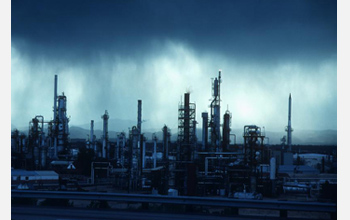Multimedia Gallery
NCAR's scientists are tracing the complex chain of events linking emissions and airborne pollutants.
Primary sources of industrial pollution include emissions from power plants, smelters and refineries, which pour oxides of sulfur and nitrogen, and other gasses, into the atmosphere. There, the oxides and gasses react with moist air to become sulfuric and nitric acids, resulting in the formation of acid rain. In addition, in the presence of sunlight, nitrogen dioxide reacts with hydrocarbons (mostly gasoline vapors that escape burning in automobile engines) and other gases to form ozone, the primary ingredient of the photochemical fog that covers many large cities. Scientists at the National Center for Atmospheric Research are tracing the complex chain of events linking emissions and airborne pollutants.
Credit: © University Corporation for Atmospheric Research
Images credited to the National Science Foundation, a federal agency, are in the public domain. The images were created by employees of the United States Government as part of their official duties or prepared by contractors as "works for hire" for NSF. You may freely use NSF-credited images and, at your discretion, credit NSF with a "Courtesy: National Science Foundation" notation.
Additional information about general usage can be found in Conditions.
Also Available:
Download the high-resolution JPG version of the image. (90 KB)
Use your mouse to right-click (Mac users may need to Ctrl-click) the link above and choose the option that will save the file or target to your computer.
Related story: Pollution Speeds up Snow Melt in Europe, Asia



